Collaborating with other teachers is important but can be difficult to do with our busy schedules. Several years ago, I teamed up with the teacher who leads our National English Honor Society for an event that truly made the time and effort worth it – a Poetry Palooza Chalk Party!
This is an event where groups of English students and Art students team up to illustrate a poem on school grounds. As simple as it sounds, we quickly saw the effects were profound, and soon, more students wanted to get in on the fun.
If you would like to try a similar activity in your school, here’s how to do it.
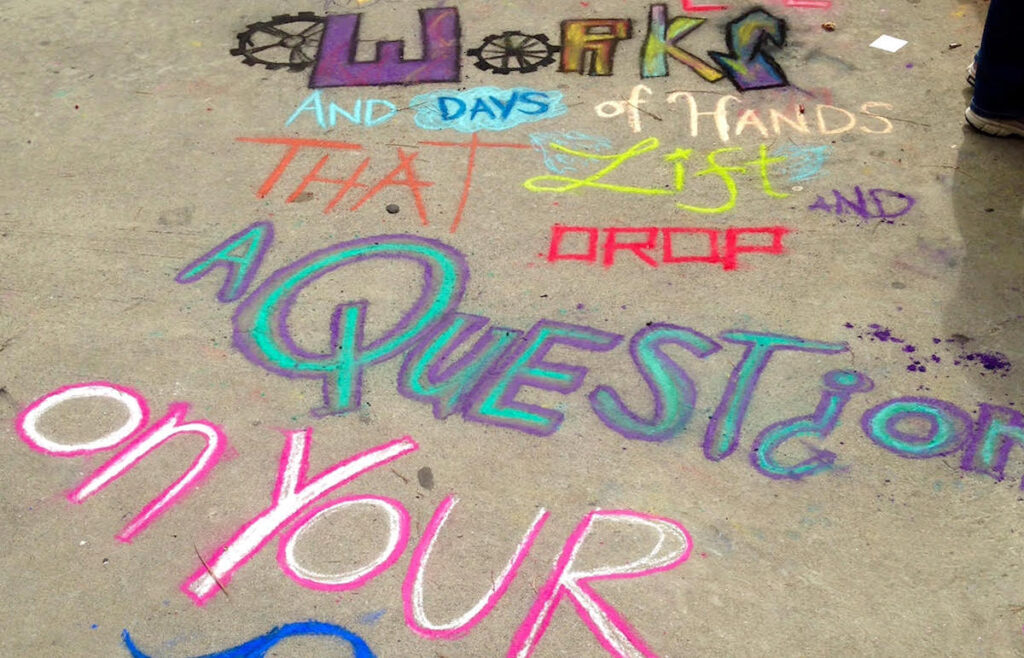
1. Decide who will participate.
At my school, our National Art Honor Society students and our National English Honor Society students were the first two groups to team up. The first year, they chose to illustrate the poem “The Love Song of J. Alfred Prufrock” by T.S Eliot. The next year, my co-teacher and I opened the event up to all of our students, not just those in our respective honor societies. If you’re looking to start this tradition, you might pilot it with a smaller group and then open things up the next year once you see how it goes.
2. Decide when you will run the event.
With smaller groups the first year, we ran the event over the lunch hour and after school. However, once the event opened up to more students, we made it an all-day event! This really allowed students to push the illustrations to the next level. It was spectacular! Work with your co-teacher and your administration to find a time or day that works for you!
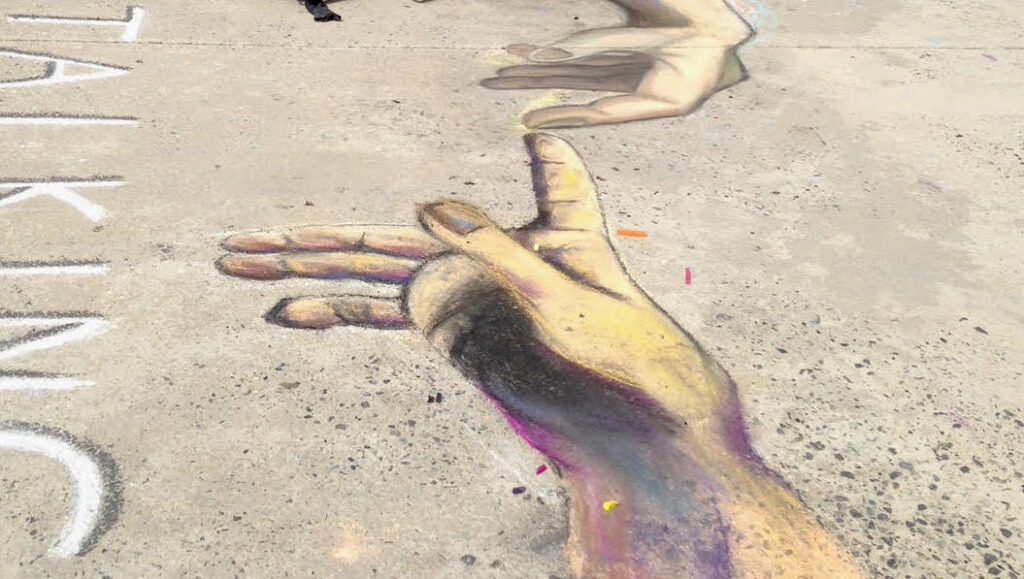
3. Invite administrators, school board members, and others from your community.
As the event continued to grow, so did our participants! During the third year of the event, we invited our administrators and school board members to join the fun. In addition, we invited our local magazine and our county’s TV crew.
This type of hands-on learning and collaboration is something many schools are striving for. It becomes an excellent advocacy tool, so I highly recommend you document it. Showing others how powerful collaboration is can have a significant impact on how they view your program.
4. As interest grows, don’t be afraid to add to and change the event.
Last year, we were approached by the National Spanish Honors Society sponsor as her students were very interested in joining in on the fun. The students decided to illustrate the poem “Ode to Socks” by Pablo Neruda in both English and Spanish.
Then, our sculpture teacher was feeling a bit left out, so he and his students decided to join us as well. They considered ways they could build a temporary string-art installation around the atrium where we hold the event.
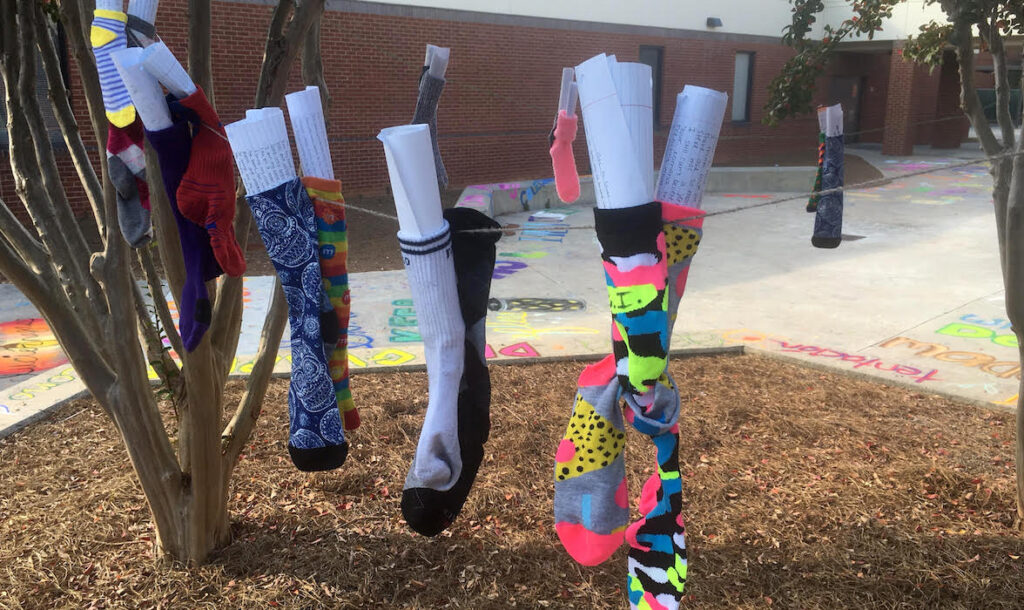
5. Once your parameters are set, make sure you and the students are well prepared to execute the vision!
A few things need to be in place before the big day. Here’s how we prepare at our school.
Have students research.
Students will need to research the poem to learn more about it. After dissecting it, they can begin to think about what fonts and imagery they would like to use.
Plan out the placement.
Before any drawing can start, students will need to plan where each part of the poem will go. We’ve found it works best to lay out the poem in a logical way so that people can actually read it. If the parts of the poem are scattered around, it can look beautiful but can be hard to follow. The goal is for viewers to easily read the poem and follow the illustrations.
Make sure you order enough chalk and pastels.
Having enough material for everyone to work with is key. At our last event, we had three classes at a time working on this outdoor project. Therefore, we ordered hundreds of boxes of chalk. Fortunately, our budget was such that we could make it happen, but you may want to consider a grant or fundraiser to ensure you have plenty.
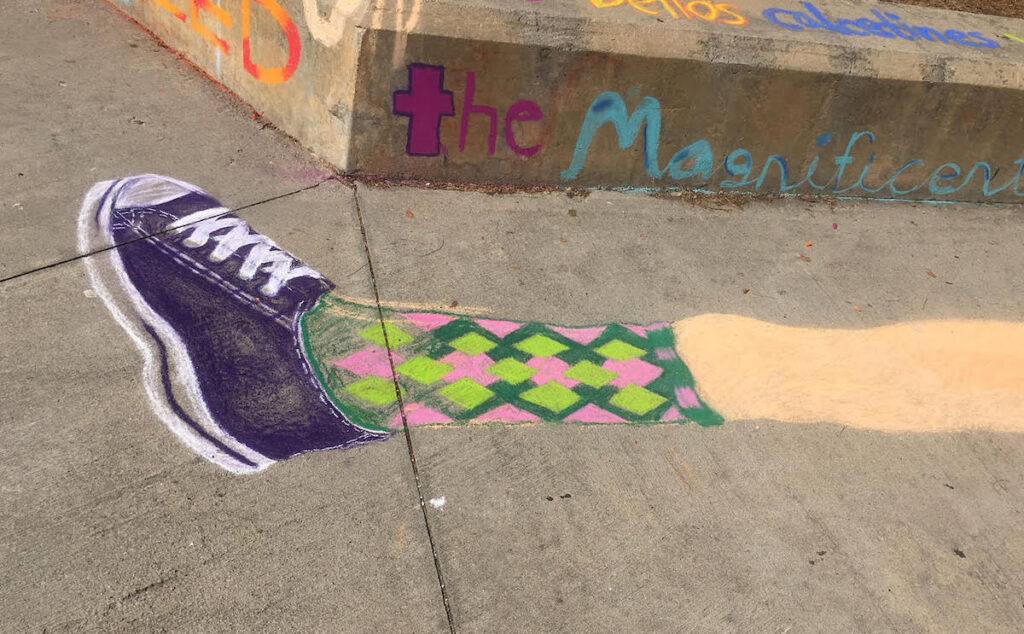
Remind students they’ll be spending the day outdoors.
It’s a good idea to remind students to wear old clothes and bring sunscreen. Sunglasses or a hat are great ideas, too!
6. Consider making this a service learning project.
This pat year, our students wanted to incorporate service learning. So, they connected the poem to an idea and requested our community bring in socks to donate to the local homeless shelter. And, wow, did we get socks! These socks were hung throughout the string installation and added color and texture to the experience. The following day, they were collected and dropped off at the shelter.
If your students want to create this type of experience, make sure they have a plan for advertising their idea to the entire school!
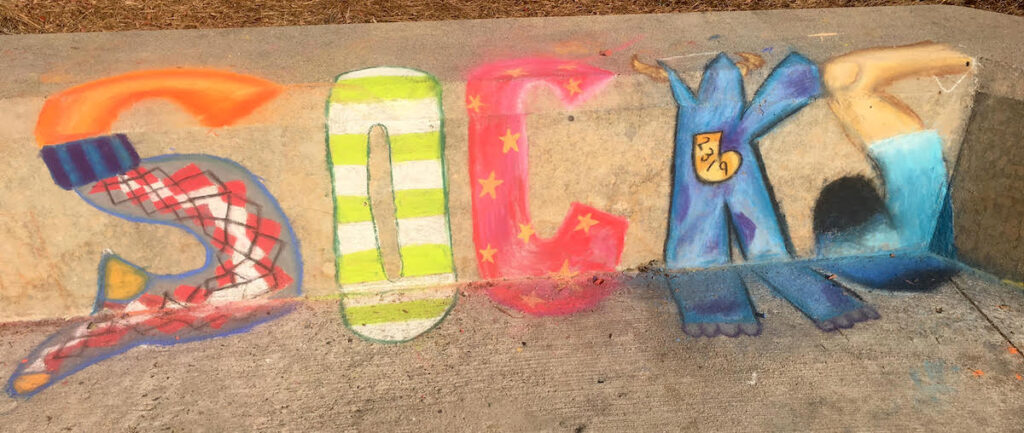
7. Enjoy!
I don’t think there is anything more gratifying than watching kids create and work together on a project such as this one. On the day of the event, it is always incredible to see so many students working hard to get their jobs done creatively and efficiently. As one group of classes finishes up, the next group comes out and continues where the previous class left off. As the words and imagery grow, the magic and excitement are contagious! Students from all corners of the school come out to eat their lunch and watch or join in on the fun. By the end of the day, the final poem literally comes to life!
With a little planning, a little imagination, and a lot of collaboration, you can bring literacy and the visual arts together! I look forward to seeing how you conduct a Poetry Palooza Chalk Party of your own!
Do you collaborate with teachers outside of the arts?
How do you bring literacy and art together as a teaching tool?
Magazine articles and podcasts are opinions of professional education contributors and do not necessarily represent the position of the Art of Education University (AOEU) or its academic offerings. Contributors use terms in the way they are most often talked about in the scope of their educational experiences.





